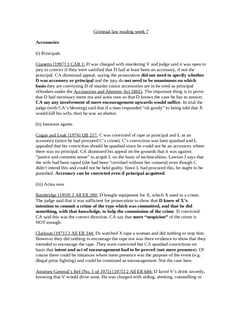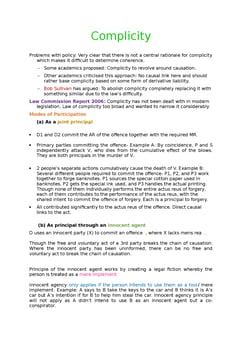Judgement for the case R v Woollin
Table Of Contents
KEY POINTS
In infant death cases, the legal system grapples with intent complexities. Actions may unintentionally lead to tragedy, making it crucial to assess the substantial risk of harm and potential intent inference. The challenge lies in balancing law, morality, and ethics, with jury instructions playing an important role in ensuring fairness.
These cases often lack explicit harmful intent, shifting focus to the defendant's perception of risk and foreseeability. This underscores the need for courts to acknowledge the tragedy while guiding jurors through intent intricacies for a just verdict, striking a balance between empathy and justice.
FACTS
The Appellant admitted losing his temper and violently throwing his three-month-old son, resulting in the infant striking a hard surface. This action caused the baby to suffer a severe head injury, including an underlying skull fracture, leading to the infant's death.
The Appellant was charged with murder but denied having the intent required for a murder conviction, asserting that he did not intend to kill his son or cause serious harm.
The prosecution argued that although the Appellant didn't intend to kill or harm his child, the forceful act of throwing the baby should have made it clear to him that serious harm was almost certain, given the vulnerability of infants to such actions.
The Appellant was ultimately convicted of murder and appealed this conviction to the Court of Appeal.
The appeal was based on the claim that the trial judge's instructions to the jury were flawed. Specifically, the judge's guidance implied that intent could be inferred if the jury believed that the Appellant appreciated a significant risk of causing serious harm when he threw the baby.
The defense contended that the judge should have instructed the jury that a murder conviction required a 'virtual certainty' of causing serious injury to the baby.
JUDGEMENT
The court emphasized that the jury should assess the potential for serious harm resulting from the defendant's actions when determining intent. The jury's evaluation should encompass all evidence, not just the defendant's conduct, to establish intent for the charged offense.
The 'virtual certainty' requirement applies when intent evidence relies solely on the defendant's actions and consequences. In this instance, the jury was told they could find intent for serious harm only if they believed the defendant was aware of a significant risk. The judge permitted the jury to exercise their judgment on intent.
Considering these factors, the judge's instructions were appropriate, and there were no grounds to challenge the verdict's validity. Consequently, the appeal against conviction was dismissed.
COMMENTARY
In a fit of anger, the defendant threw his three-month-old son, resulting in the baby striking a hard surface and suffering fatal injuries. The defendant faced a murder charge but denied having the specific intent to kill or seriously harm the child.
The defendant was convicted of murder and appealed, contending that the jury instructions were flawed. The appeal focused on whether the judge's guidance to the jury regarding intent was accurate.
The jury was instructed to find intent for serious harm only if they believed the defendant was aware of a significant risk. Ultimately, the judge's instructions were deemed appropriate, and the appeal against conviction was dismissed.
ORIGINAL ANALYSIS
Woollin lost his temper and threw his 3 month old son on to a hard surface and the child died.
The judge directed the jury initially that for a conviction of murder the defendant had to appreciate death as a virtual certainty for the jury to infer intention. However he later changed this to say that substantial risk was enough.
He was convicted of murder and the CA dismissed his appeal.
-
HL allowed his appeal, substituting a conviction of manslaughter for one of murder.
The judge should not have given the “misdirection” of substantial risk and that the direction should have been more thorough, saying that the jury “were not entitled” to convict unless the defendant appreciated the “virtual certainty” of the infant’s death.
R v Moloney and R v Nedrick were precedents.
It was also said to be unhelpful to the jury to ask questions like “how probable was the result”. They should instead state that the jury are not entitled to find X unless they are certain of Y, etc.
RELATED CASES
For Further Study on R v Woollin

Criminal Law notes fully updated for recent exams at Oxford and Cambrid...
Need instant answers? Our AI exam tutor is here to help.
Ask questions 🙋 Get answers 📔 It's simple 👁️👄👁️
Our AI is educated by the highest scoring students across all subjects and schools. Join hundreds of your peers today.
Get StartedSimilar Cases
Related Product Samples
These product samples contain the same concepts we cover in this case.
| Criminal Law | Homicide Notes (20 pages) |
| Criminal law | Homicide And Intent Notes (16 pages) |
| Criminal Law | Mens Rea — Intention Recklessness And Negligence Notes (24 pages) |

 Since 2010, Oxbridge Notes has been a trusted education marketplace, supplying high-quality materials from top achievers at universities like Oxford, Cambridge, LSE, Harvard, and Yale.
Since 2010, Oxbridge Notes has been a trusted education marketplace, supplying high-quality materials from top achievers at universities like Oxford, Cambridge, LSE, Harvard, and Yale.